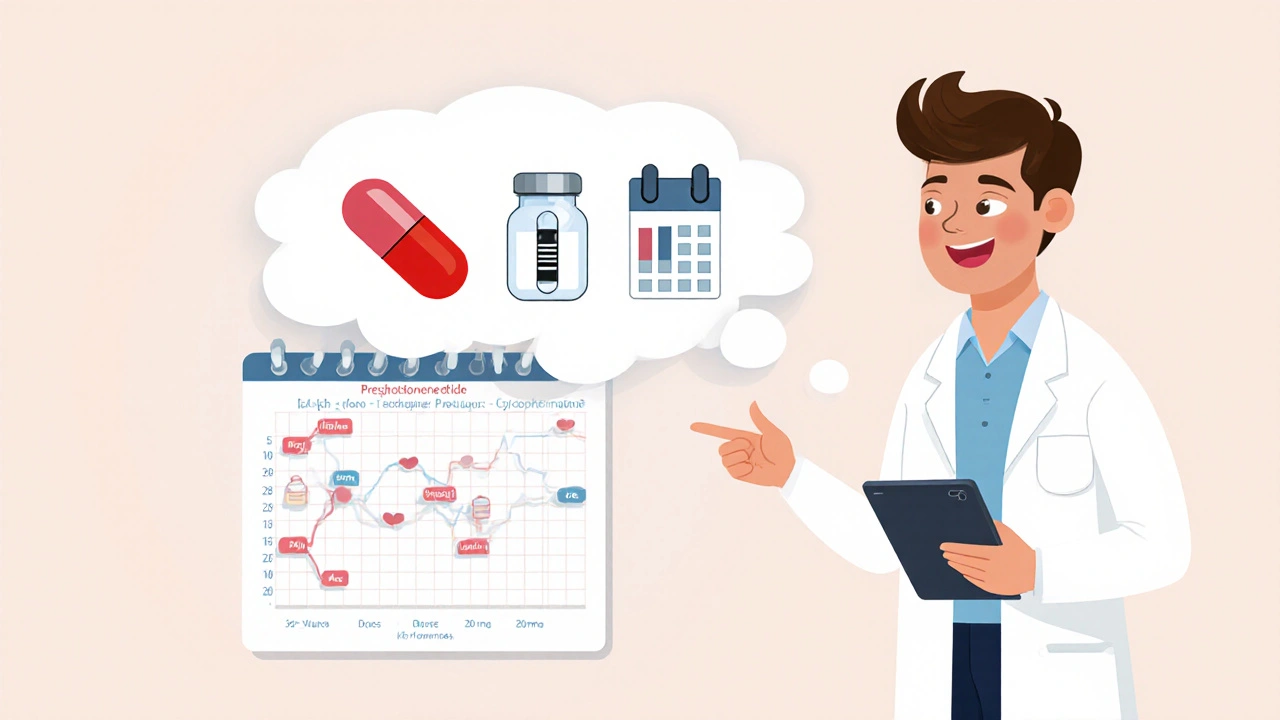Pneumocystis Pneumonia Prophylaxis
When dealing with Pneumocystis pneumonia prophylaxis, the preventive use of medication to stop Pneumocystis jirovecii infection in vulnerable people. Also known as PCP prophylaxis, it focuses on patients with weakened immune systems such as those living with HIV/AIDS, organ‑transplant recipients, or people on chemotherapy. This approach covers drug choice, timing, and safety checks, making sure the right people get the right protection.
Why Prophylaxis Matters
Guidelines state that trimethoprim‑sulfamethoxazole (TMP‑SMX), the first‑line drug for PCP prevention reduces infection risk by over 90 % when taken daily or three times a week. The central idea is simple: assess the patient’s CD4 count, recent steroid use, or other risk factors, then start prophylaxis before the infection takes hold. If TMP‑SMX isn’t tolerated, alternatives like atovaquone, an oral medication useful for patients with sulfa allergy or dapsone, often paired with folic acid to limit blood‑related side effects step in. Monitoring labs periodically catches early signs of kidney or blood issues, so clinicians can switch drugs before problems grow.
Another key link is between prophylaxis and overall health outcomes. Studies show that patients who stay on TMP‑SMX experience fewer hospital stays and lower mortality. This relationship requires regular follow‑up visits, education about adherence, and clear instructions on what to do if side effects appear. Importantly, once a patient’s immune function rebounds—say, CD4 count climbs above 200 cells/µL for HIV—the need for continued prophylaxis is reassessed, aligning treatment with the current risk level.
Looking ahead, new formulations and shorter dosing schedules are being tested to improve tolerability. Researchers are also exploring whether combination regimens can protect against other opportunistic infections at the same time. Below, you’ll find practical tips, drug comparisons, and real‑world advice that tie directly into these concepts, giving you a toolkit to manage PCP risk confidently.
Ready to dive deeper? The articles below break down drug dosing, side‑effect management, and patient‑focused strategies so you can apply prophylaxis effectively in everyday practice.

Who Needs Pneumocystis Pneumonia Prophylaxis on Immunosuppressants?
- Oct, 25 2025
- 10
Learn who truly needs Pneumocystis pneumonia prophylaxis when on steroids or immunosuppressants, with clear guidelines, drug options, monitoring tips, and a practical checklist.
Categories
- Medication Information (71)
- Health and Wellness (45)
- Women's Health (5)
- Supplements (5)
- Pharmacy Reviews (5)
- Dermatology (4)
- Fitness and Wellness (3)
- Nutrition (2)
- Mental Health (2)
- Support Resources (2)
Archives
- December 2025 (12)
- November 2025 (24)
- October 2025 (29)
- September 2025 (14)
- August 2025 (2)
- July 2025 (7)
- June 2025 (2)
- May 2025 (3)
- April 2025 (4)
- March 2025 (3)
- February 2025 (1)
- January 2025 (3)
- online pharmacy
- dietary supplement
- health benefits
- side effects
- treatment
- wellness
- optimal health
- safe medication purchase
- online pharmacy Australia
- medication safety
- link
- women's health
- dietary supplements
- sleep
- asthma treatment
- diabetes management
- post-exposure prophylaxis
- type 2 diabetes medication
- ED medication comparison
- compare
